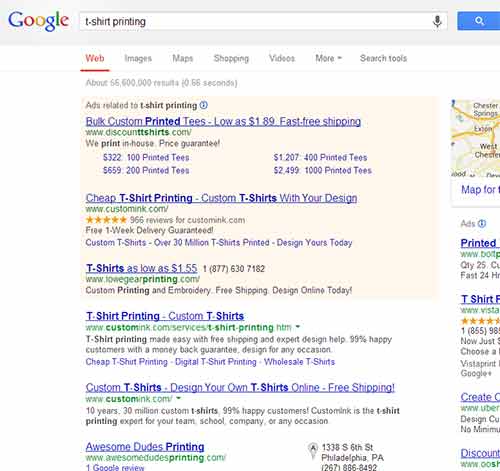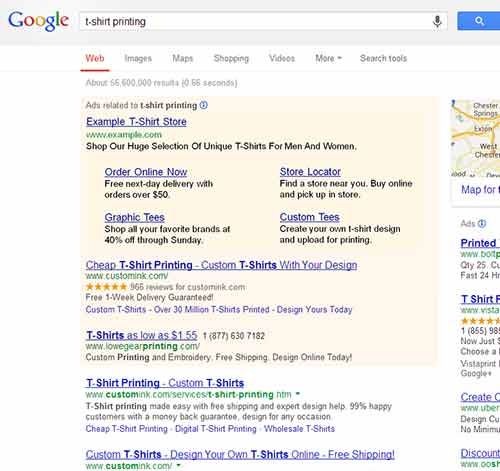Google is always trying to bring new enhancements to their search results page ads, but many of their recent offerings have something interesting in common: real estate. For the longest time your space was limited to three lines of text and a display URL. Then came location extensions. Then came sitelinks. Product listing ads, phone extensions, and +1 buttons have all joined the list of ways to make your ads stand out by adding visual cues and, most importantly, making your ads bigger. A recent update allows users to create their own custom description text for sitelinks, which turns this:

Into this:

The second image is based on Google’s sample of an enhanced campaign with custom sitelink descriptions. The advertiser gains additional space on the page and gets to fully control the presentation of all the related text.
SEO Concerns
This expanded ad creates a major imbalance when compared to organic results. It’s unclear how Google will handle the expanded size of these ads, but based on their example the third position in an organic results page may stop showing up above the fold in some cases.
The same applies to my post about image extensions, which offers another avenue to push your competition down the page. Phone number and location extensions also accomplish this, but without as big an impact on other advertisers and organic results. As advertisers roll out these new extensions, SEO experts will have to keep a close eye on the impact to their results.
What’s Next?
Google will unquestionably continue to offer new opportunities to generate clicks, each of which may cause ads to encroach ever further into the space formerly reserved for non-paid results. Based on Google’s latest offerings, it seems like the balance between paid and organic results is inexorably shifting. They don’t seem interested in hiding the heavy thumb they’re pressing on the paid side of the scale. It’s just another reminder that businesses should constantly be working to find the right balance between paid advertising and SEO optimization.




